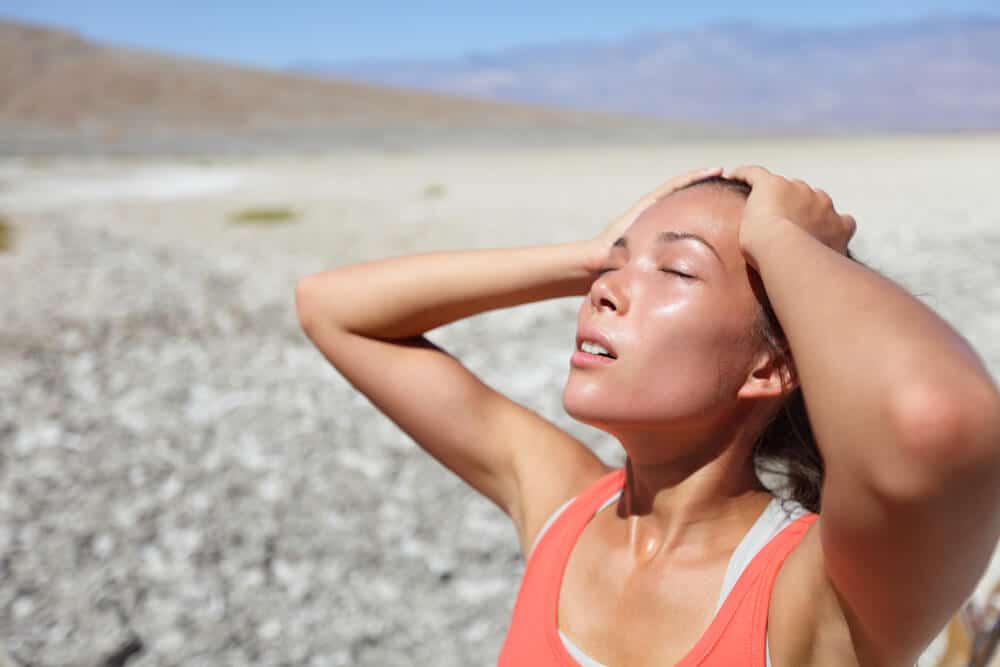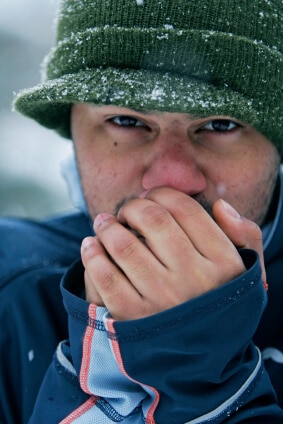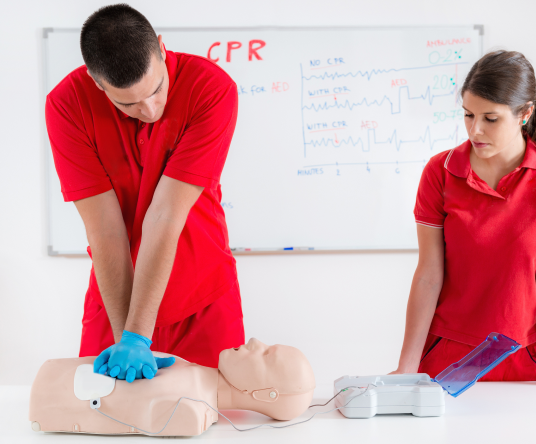Chapter 21: First Aid for Heat And Cold Related Emergencies
What is heat and cold related emergency?
Overexposure to heat or cold can make a person seriously ill. In this section we will cover heat-related emergencies such as: heat cramps, heat exhaustion and heat stroke. We will also cover cold-related emergencies such as: frostbite and hypothermia.
Causes of heat and cold related emergency:
– Heat-Related Emergency:
- Dehydration
- Excessive clothing in hot / humid temperatures
- Excessive sweating
- Overexposure to a hot environment
- Too much exercise
– Cold-Related Emergency:
- Exposure of body parts in below freezing point temperatures
- Lack of warm clothing / heating in cold environment
- Low body temperature
- Prolonged exposure to cold temperatures
- Wet clothes in a cold area
Signs and Symptoms of heat and cold related emergency
– Heat-Related Emergency:
- Cramps: nausea; vomiting; muscle cramps, spasms or pain; dizziness; exhaustion; sweating
- Exhaustion: pale, moist or flushed skin; weakness; headache; dizziness; cramps; sweating; faint feeling
- Stroke: high body temperature; fainting; dizziness; seizure; nausea and vomiting; cramps
– Cold-Related Emergency:
- Frostbite: numbness; skin discoloration: waxy or grayish-yellow skin; black blisters; cold; hardened skin
- Hypothermia: shivering; numbness; glassy stare; indifference or loss of consciousness; slow pulse and slow breathing; slurred speech; hard and painless body parts; person appears to be dead
First Aid for Heat and Cold Related Emergency with Examples:
Heat Cramps:
This is the least severe of the heat-related emergencies. Normally cramps are caused by too much exercise. Once a person has rested and feels better they can carefully resume exercise. Stretching and icing the painful muscles may help.

Heat Exhaustion:
If this condition is not treated, it can lead to a heat stroke. Heat exhaustion may occur if a person is in the heat for a long period of time or is sweating a lot. It often affects athletes, firefighters, construction workers, and factory workers, and those who wear heavy clothing in hot and humid environments.

Heat Stroke:
This is the least common but the most severe heat-related emergency. It develops when the body system is overwhelmed by heat and begins to stop functioning.
Frostbite:
Frostbite occurs when a part of your body is exposed to extreme cold. It typically affects the fingers, nose, ears and toes. Severity of this injury depends on the temperature, length of exposure and wind. In the most severe of cases, frostbite can lead to a loss of the affected body part. Remember, do not rub the frostbitten area.
Hypothermia:
Hypothermia is when the entire body cools because its ability to keep warm fails. This condition is severe and can lead to death. The temperature does not have to be below freezing to develop hypothermia. If a person stops to shiver, this is a sign of further deterioration. Shivering stops when the body temperature is very low.
First Aid Actions / Treatment Steps: Heat-Related Emergencies
- Assess the scene and check for your safety.
- Activate EMS (Call 9-1-1) if person experiences heat stroke or heat exhaustion condition worsens.
- Get a First Aid kit and wear personal protective equipment.
- If person is experiencing:
- Heat Cramp: have the person rest and drink juice or a sports drink, which contains sugar and electrolytes; lightly stretch or massage the cramped area
- Heat Stroke: instantly cool the person and if possible, immerse in cool water up to the chin
- If necessary in severe conditions, provide CPR. If you do not know how, give Hands-Only CPR.
First Aid Actions / Treatment Steps: Cold-Related Emergencies
- Assess the scene and check for your safety.
- Activate EMS (Call 9-1-1).
- Get a First Aid kit and wear personal protective equipment.
- If person is experiencing:
- Frostbite: remove tight and wet clothing from affected area; pat skin dry; do not rewarm the area if there is the danger of it refreezing; if you rewarm, use warm, not hot, water
- Hypothermia: get the person to a warmer place; remove wet clothing and cover the person with a blanket and any additional articles of clothing to provide warmth


